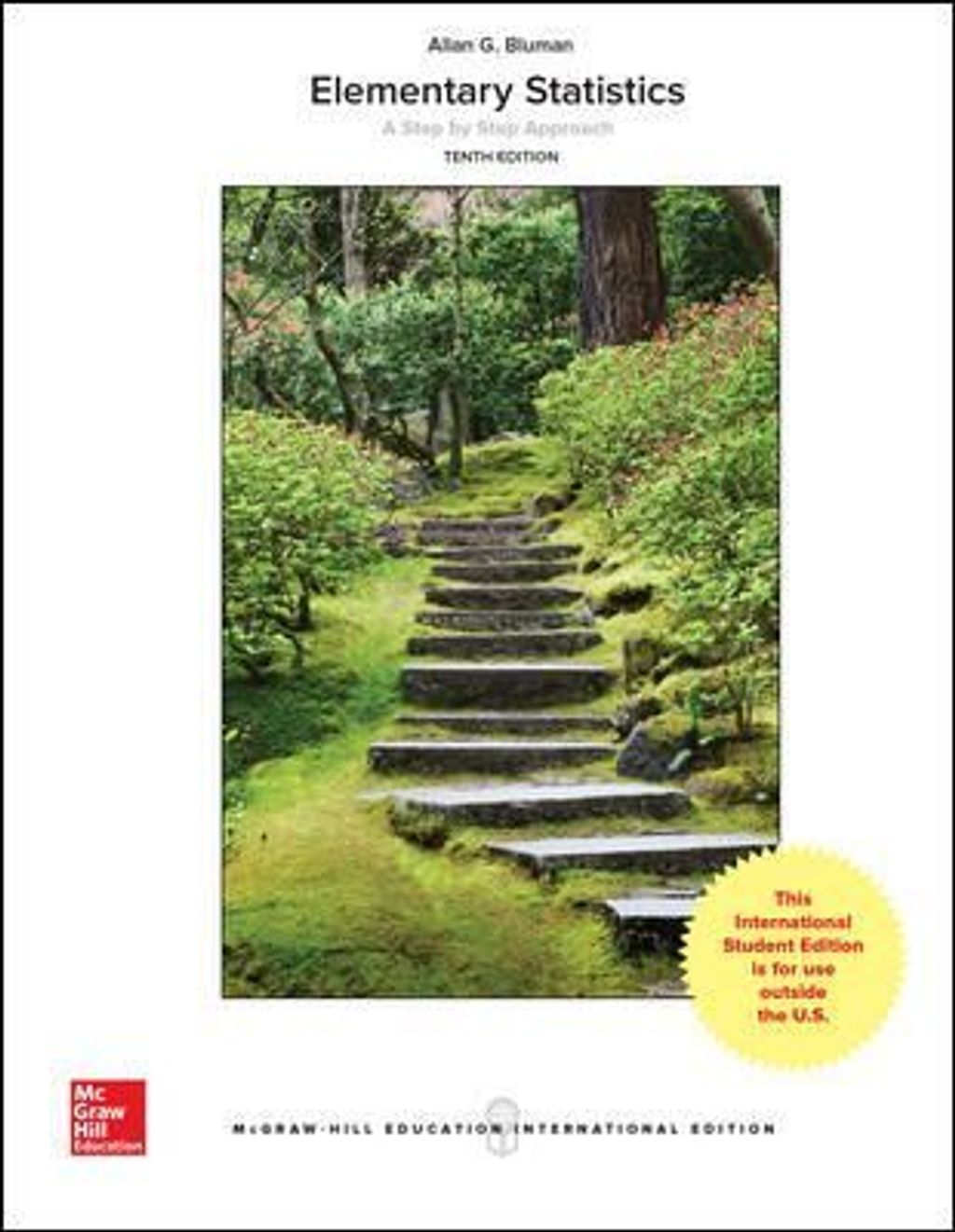Elementary Statistics: A Step By Step Approach, 10th Edition
- Regular price
- RM 154.00
- Sale price
- RM 154.00
- Regular price
-
RM 154.00
Share
Allan G. Bluman
Bluman's Elementary Statistics takes a non-theoretical approach to teaching the course. Statistics is the language of today's world and Bluman's market-leading Step-by-Step Approach makes it easy to learn and understand! Helping students move from the computational to the conceptual, Bluman provides all the support your students need to grasp the fundamentals of statistics and make that connection.
1 The Nature of Probability and Statistics
1.1 Descriptive and Inferential Statistics
1.2 Variables and Types of Data
1.3 Data Collection and Sampling Techniques
1.4 Observational and Experimental Studies
1.5 Uses and Misuses of Statistics
1.6 Computers and Calculators
2 Frequency Distributions and Graphs
2.1 Organizing Data
2.2 Histograms, Frequency Polygons,and Ogives
2.3 Other Types of Graphs
3 Data Description
3.1 Measures of CentralTendency
3.2 Measures of Variation
3.3 Measures of Position
3.4 Exploratory Data Analysis
4 Probability and Counting Rules
4.1 Exploratory Data Analysis
4.2 The Addition Rules for Probability
4.3 The Multiplication Rules and ConditionalProbability
4.4 Counting Rules
4.5 Probability and Counting Rules
5 Discrete Probability Distributions
5.1 Probability Distributions
5.2 Mean, Variance, Standard Deviation,and Expectation
5.3 The Binomial Distribution
5.4 Other Types of Distributions (Optional)
6 The Normal Distribution
6.1 Normal Distributions
6.2 Applications of the NormalDistribution
6.3 The Central Limit Theorem
6.4 The Normal Approximation to the BinomialDistribution
7 Confidence Intervals and Sample Size
7.1 Confidence Intervals for the Mean When ? Is Known
7.2 Confidence Intervals for the Mean When ? Is Unknown
7.3 Confidence Intervals and Sample Size for Proportions
7.4 Confidence Intervals for Variances and Standard Deviations
8 Hypothesis Testing
8.1 Steps in Hypothesis Testing—Traditional Method
8.2 z Test for a Mean
8.3 t Test for a Mean
8.4 z Test for a Proportion
8.5 ?2 Test for a Variance or Standard Deviation
8.6 Additional Topics Regarding Hypothesis Testing
9 Testing the Difference Between Two Means, Two Variances, and Two Proportions
9.1 Testing the Difference Between Two Means: Using the z Test
9.2 Testing the Difference Between Two Means of Independent Samples: Using the t Test
9.3 Testing the Difference Between Two Means: Dependent Samples
9.4 Testing the Difference Between Proportions9.5 Testing the Difference Between Two Variances
10 Correlation and Regression
10.1 Scatter Plots and Correlation
10.2 Regression
10.3 Coefficient of Determination and Standard Error of the Estimate
10.4 Multiple Regression (Optional)
11 Other Chi-Square Tests
11.1 Test for Goodness of Fit
11.2 Tests Using Contingency Tables
12 Analysis of Variance
12.1 One-Way Analysis of Variance
12.2 The Scheffe Test and the Tukey Test
12.3 Two-Way Analysis of Variance
13 Nonparametric Statistics
13.1 Advantages and Disadvantages of Nonparametric Methods
13.2 The Sign Test
13.3 The Wilcoxon Rank Sum Test
13.4 The Wilcoxon Signed-Rank Test
13.5 The Kruskal-Wallis Test
13.6 The Spearman Rank Correlation Coefficient and the Runs Test
14 Sampling and Simulation
14.1 Common Sampling Techniques
14.2 Surveys and Questionnaire Design
14.3 Simulation Techniques and the Monte Carlo Method
Appendices
Appendix A: Tables
Appendix B: Data Bank
Appendix C: Glossary
Appendix D: Photos Credits
Appendix E: Selected Answers
Additional Topics Onlne
Algebra Review
Writing the Research Report
Bayes' Theorem
Alternate Approach to the Standard Normal Distribution
Bibliography





